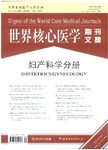盆腔器官脱垂和尿失禁患者发生的功能性肠病和肛门直肠功能紊乱
Functional bowel and anorectal disorders in patients with pelvic organ prolapse and incontinence作者机构:Cleveland Clinic Foundation Department of Gynecology and Obstetrics 9500 Euclid Avenue/A81 Cleveland OH 44195 United States
出 版 物:《世界核心医学期刊文摘(妇产科学分册)》 (Core Journal in Obstetrics/Gynecology)
年 卷 期:2006年第2卷第5期
页 面:6-7页
学科分类:1002[医学-临床医学] 100210[医学-外科学(含:普外、骨外、泌尿外、胸心外、神外、整形、烧伤、野战外)] 100211[医学-妇产科学] 10[医学]
主 题:盆腔器官脱垂 功能性肠病 肛门直肠 阴道后壁膨出 罗马Ⅱ标准 盆腔手术史 痉挛性肛部痛 统计学资料
摘 要:The purpose of this study was 1) to determine the prevalence of functional bowel and anorectal disorders as defined by the Rome Ⅱ criteria in patients with advanced pelvic organ prolapse (POP) and urinary incontinence (UI), and (2) to determine if the extent of prolapse on gynecologic examination is related to the subtypes of constipation or any functional anorectal pain disorder. Study design: Three hundred and two consecutive female subjects presenting to a tertiary urogynecology clinic were enrolled. Demographic, general medical, and physical examination information, including POPQ measurements and a standardized sacral neurologic evaluation, were collected. The prevalence of functional disorders of the bowel, rectum, and anus as defined by the Rome Ⅱ criteria were collected using the Rome Ⅱ Modular questionnaire. Relationships of functional disorders to various components of the vaginal examination were reviewed. Results: Thirty six percent (108/302) met the criteria for constipation, including the following subtypes: 19% outlet constipation, 5% functional constipation, 5% constipation predominant irritable bowel syndrome (IBS), and 7% IBS outlet. Nineteen percent (56/302) of subjects had IBS or 1 of its subtypes. Functional diarrhea was seen in 6% (17/302), fecal incontinence in 19% (58/302), and anorectal pain disorders in 25% (77/302). After controlling for age, parity, diabetes, constipating medications, and previous pelvic surgery, there were no differences in the prevalence of constipation or any of its subtypes between patients with UI and those with stage 3 or 4 POP. Fecal incontinence was independently associated with UI (adjusted odds ratio[OR] 6.3; 95% CI 2.6- 19.1), but not advanced POP. Neither overall stage of POP nor stage of posterior vaginal prolapse was significantly associated with any of the functional bowel disorders, including constipation and its subtypes. Perineal body measurement was significantly longer in patients with outlet type co



